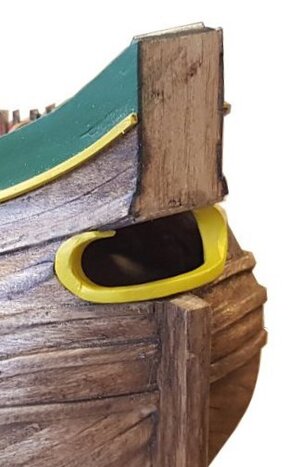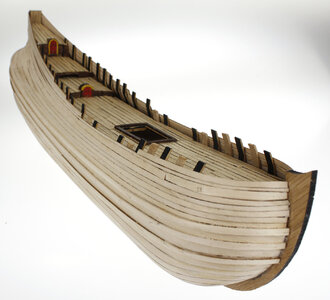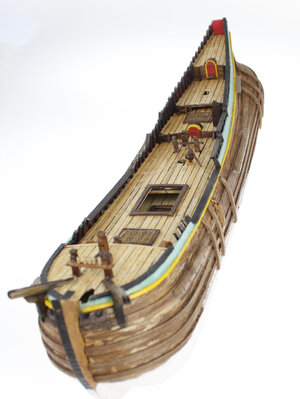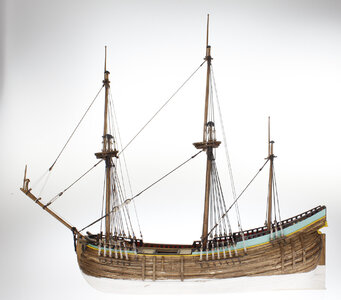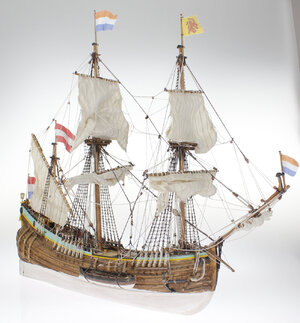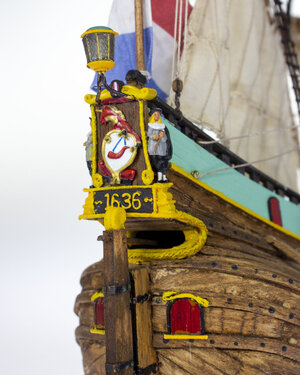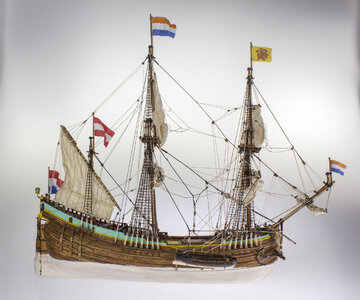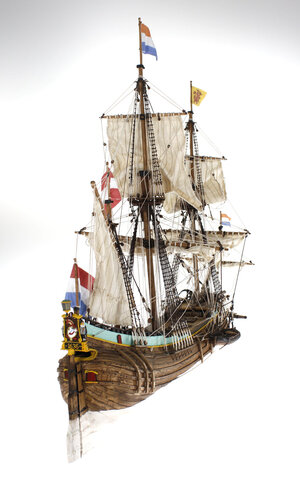Very impressive engineering. Looking forward to receiving the kit. Do you have any future builds in mind?
Kent
Kent, I expect to ship it beginning of next week. The next one we are starting up is "D'Halve Maen" or Half Moon., the ship of Henry Hudson with which he entered the waters from a large area of land. This waterway is now the Hudson river and the land is nowadays known as America. The Dutch founded a small settlement at the Hudson and called it Nieuw Amsterdam. But after loosing and winning some wars with England they lost this settlement to them - got it back, and lost it again (and got Surinam in return). The English changed the name into New York. This settlement still excists.
I found a nice and short piece of information on the internet and translated this:
Henry Hudson, an explorer commissioned by the Dutch East India Company (VOC), was looking for another route to the east. In 1609 he discovered the east coast of the present-day United States and founded the colony of Nieuw Nederland here. In 1624 the settlement of Nieuw Amsterdam was founded here in present-day Manhattan, New York.
During the Second Anglo-Dutch War (1665-1667) the English conquered the colony and named it New York, but during the Third Anglo-Dutch War (1672-1674) New Amsterdam was recaptured. With the Treaty of Westminster, which ended the Third Anglo-Dutch War, the Netherlands gave up the colony permanently. In exchange, England gave up Surinam, which was conquered by the Dutch in 1666.
In present-day New York, you will come across various references to the former Dutch colony. For example, a secondary school is called 'Stuyvesant High School', named after the last Dutch director general of New Netherland, Peter Stuyvesant. He governed the colony from 1645 to 1664. (end of translation)
A non confirmed story says that one of the earlier settlers had the name of Jan-Kees. Jan and Kees are both Dutch names (Jan = John, and Kees is a bit like Charles). Pronounce Jan-Kees in an English or American way and you get "yankees"







